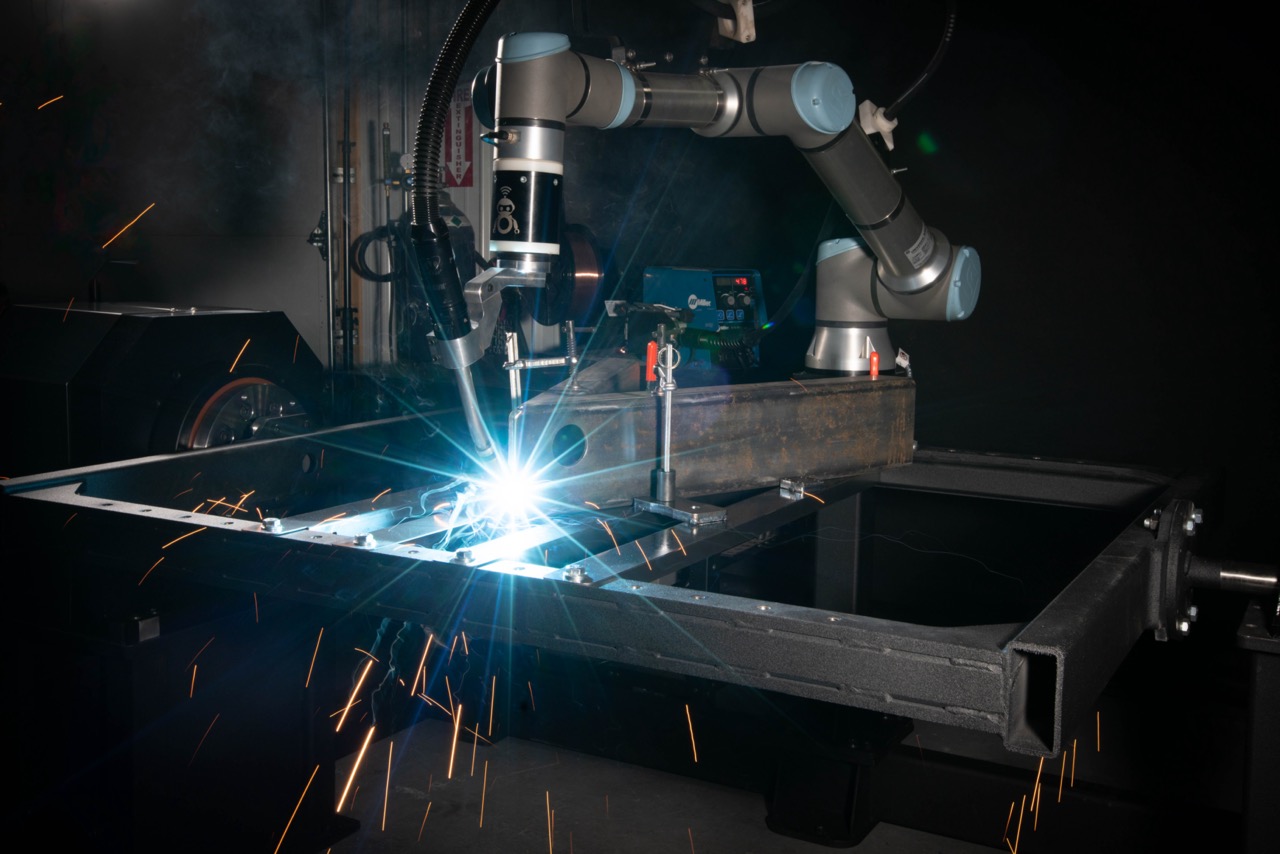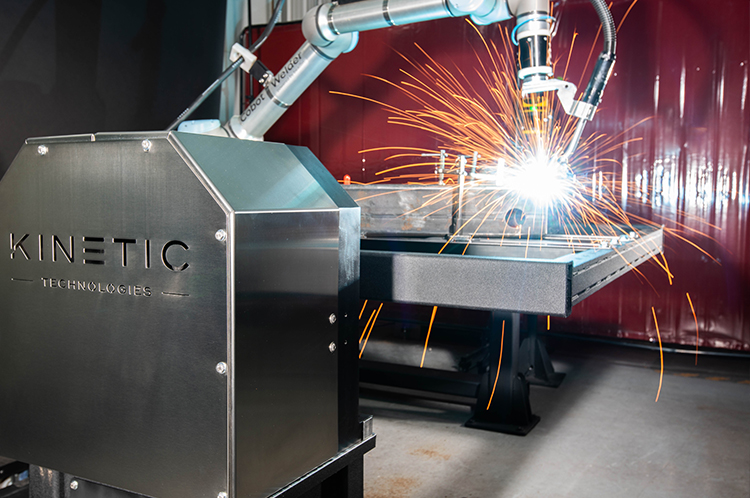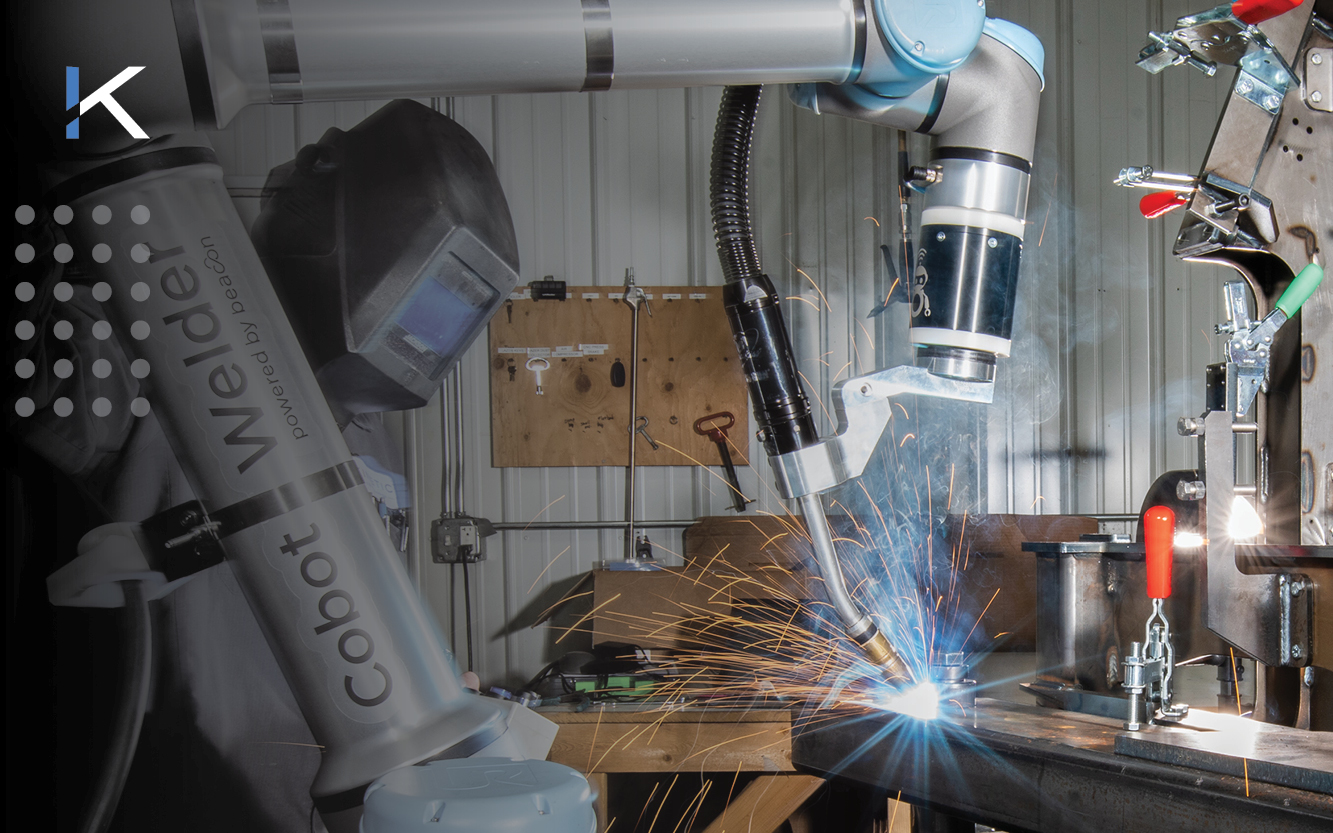TIG welding is known for its precise and clean welds, and is widely used in industries like aerospace or automotive that demand high-quality welds with minimal imperfections. Since precision is key, automating TIG welding can be a huge advantage, especially if you’re looking to increase production without losing quality.
By introducing robotic TIG welding, your shop can maintain the high standards of traditional manual TIG welding while significantly boosting productivity. Upgrading to robotic TIG welding allows you to achieve greater throughput and consistency in your welds, making it a practical move for any forward-thinking shop.
For shop owners, this transition not only meets the increasing demand for quality and production but also tackles the challenge of skilled labor shortages.
In this article
• What is Robotic TIG Welding? ›
• Why Automate TIG Welding? ›
• Is Robotic TIG Welding Right for You? ›
• Transitioning to Automation ›
• Implementing Robotic TIG Welding Solutions ›
• Optimize Your Operations with Welding Positioners ›
• Elevate Your Welding Operations with Robotic TIG Welding ›
• FAQ ›
What is Robotic TIG Welding?
Robotic TIG welding uses programmable robots or cobots to automate the TIG welding process. These systems use advanced sensors and controls to make precise welds that strictly adhere to set parameters, ensuring consistent, repeatable results.
It’s particularly valued in industries like automotive, and aerospace where the quality and appearance of welds are critical. TIG welding is known for producing clean, strong, and visually appealing welds without any spatter, making it perfect for jobs that demand precision and a flawless finish.
Distinctions Between Manual and Automated TIG Welding
Manual TIG requires a welder to manually control the torch and filler material. This can be a challenge because it requires a steady hand and precise coordination between the torch, filler material, and the base metal. Additionally, the welder must constantly monitor the heat input and adjust the settings accordingly to ensure a proper weld.
Robotic TIG automates these processes. With finely tuned welding parameters, the robot can weld at higher speeds than a human. The result is clean and visually pleasing welds that meet quality control standards.
Why Automate TIG Welding?
Switching to robotic TIG welding can significantly improve your operations. Here are 4 reasons you should consider automating TIG welding:
1. Precision and quality control: Robots deliver consistent welds with superior precision, which reduces errors and minimizes the need for rework.
2. Increased efficiency: Automation allows for continuous operation, increasing arc-on time while reducing the time spent on each weld.
3. Safety improvements: By automating TIG welding, you reduce the physical strain on workers and lower the risk of injuries, creating a safer workplace.
4. Long-term cost-effectiveness: Although the upfront cost is higher, the efficiency gains and reduced labor costs result in substantial savings over time. Additionally, robotic systems can easily scale to meet growing production needs, thereby improving your ROI.
Is Robotic TIG Welding Right for You?
To decide if robotic TIG welding fits your manufacturing needs, it’s important to evaluate key aspects of your current operations and future goals.
• Analyze welding task complexity and requirements: Robotic TIG welding excels in environments where precision and repeatability are critical. If your products require intricate welds with high aesthetic or structural standards, automation can provide the consistency that manual welding struggles to achieve.
• Volume, scalability, and customization needs: Consider the volume of welding tasks and the potential for future growth. Robotic welding systems are ideal for high-volume production but also offer scalability that can adjust to increasing or fluctuating demand. Additionally, if your market demands customization, modern robotic systems can be reprogrammed to accommodate different welding specifications.
• Reduce weld times: Manual welding might take 15 minutes per part, but a robotic system can reduce this to just 5-6 minutes. Robots efficiently weld around a part in a way that cannot be matched by manual welding, which saves time because there’s no need to reposition the part. This also cuts down on rework after welding, because robots produce cleaner welds with fewer imperfections.
• Effective for welding aluminum: Robotic TIG welding is particularly effective with materials like aluminum, which is challenging to weld manually due to its high thermal conductivity and lower melting point. Automating this process allows for precise control over the heat input, which is crucial for preventing warping and ensuring strong, clean welds on aluminum. The precision and control of robotic welding minimizes common issues like bubbling, ensuring stronger, cleaner welds.

Transitioning to Automation
There are a few key elements to consider before you transition to automation: the initial investment, skill requirements and how you will integrate the new system into your existing operations.
• Initial investment and setup considerations: Assess the cost of robots, welding positioners, and other necessary hardware, as well as any changes needed to accommodate the new systems.
• Expertise and training requirements: While robotic systems handle the bulk of the welding task, skilled technicians are needed to manage and maintain the equipment. Evaluate if your current team has the skills required, or if you will need to hire or train employees, which could add to the initial costs.
• Integration with current manufacturing workflows: Consider how a robotic welding system will integrate with your existing manufacturing processes. This includes the compatibility of robotic systems with your current production line, data systems, and quality control protocols. Being prepared for integration will minimize downtime and disruptions to your existing operations.
Implementing Robotic TIG Welding Solutions
To successfully integrate robotic TIG welding into your manufacturing operations, a detailed and methodical approach is important.
• Planning, design, and system selection: Start by planning and designing the robotic welding setup to meet your specific requirements. Collaborate with experts like THG Automation to find a tailored welding robot that fits perfectly into your manufacturing landscape.
• Technical setup and calibration: After selecting the right equipment, getting everything set up and properly calibrated is crucial. This step fine-tunes the robots to work efficiently and accurately, ensuring top-notch welding results. We can help streamline this process, making sure your setup is optimized for the best performance.
• Testing and deployment: Conduct comprehensive testing to ensure the system performs correctly under operational conditions. Successful testing leads to confident deployment, minimizing downtime and disruption.
Optimize Your Operations with Welding Positioners
Welding positioners are essential tools in automated welding, improving the precision and efficiency of the welding process.
Welding positioners are designed to place the part in the optimal position so that your welding robot can weld at different angles.
With welding positioners, you can:
• Process parts previously out of scope
• Increase arc-on-time
• Speed up your weld cycles
• Maximize your space
Types of Welding Positioners
• Our Headstock-tailstock positioners are designed specifically to be used with robotic welders. They are ideal for long or awkward workpieces, providing support on both ends, which is important for balance and rotation during welding.
• Rotary turntable positioners allow you to load and weld parts simultaneously, dramatically increasing arc-on-time. They rotate around a single axis, allowing you to weld larger parts that require 360-degree access.
Both types are essential for precision welding, offering features that allow for smooth and controlled rotation and positioning, essential for intricate TIG welds.

Boost Efficiency and Safety in Operations
Incorporating these specialized positioners into robotic welding setups increases efficiency by reducing the time and effort needed for manual repositioning.
Automating the positioning tasks minimizes the physical strain on workers and reduces exposure to hazardous welding environments, contributing to a safer workplace and better overall production output.
Selecting a Partner for Integration
When transitioning to automated welding, the integration partner you choose is critical. An experienced partner not only helps with setting up and optimizing your robotic system but also supports you throughout and beyond the integration phase.
A good partner doesn’t just walk away after setup; they stay to offer troubleshooting, further optimizations, and help with any operational hiccups. This support is essential for maintaining high productivity and getting the most from your investment.
Our belief is simple: having a technical expert by your side is infinitely more valuable than navigating the complexities of automation alone.
When you partner with us, we help you through every stage: installation, customization, support, and training.
We will provide the expertise you need to install and customize your cobot and positioner system. We will help your staff get up to speed with the new technology, equipping them with the necessary skills to operate and maintain the equipment.
Elevate Your Welding Operations with Robotic TIG Welding
If you’re a shop owner looking to boost the precision, efficiency, and safety of your operations, adopting robotic TIG welding offers some compelling advantages.
This technology not only improves the quality of your welds and speeds up your production but also cuts down on labor costs and scales easily to keep up with your future growth.
At Kinetic Technologies, we’re here to guide you every step of the way as you transition to advanced welding automation. Known for our solutions-first approach, we handle every detail of your project with the utmost precision.
But we don’t just stop there; we build lasting partnerships through continuous support and constant innovation. With our proven track record, we’re not just a provider—we’re a partner invested in your success.
FAQ
Can TIG welding be automated?
Absolutely, TIG welding can be automated. Automation is often implemented in industries where consistent quality and precision are critical, such as in aerospace and automotive manufacturing.
How efficient is robotic welding?
Robotic welding is highly efficient. It significantly reduces the time needed for welding tasks compared to manual welding, thanks to continuous operation and consistent speeds. It also minimizes errors and rework, leading to better resource utilization.
Can robots weld better than humans?
Robots can produce more consistent welds than humans, which is advantageous for applications requiring uniformity across many items. However, human welders excel in tasks that require judgment, adaptability, and nuanced control, especially in complex or one-off projects.
How much faster is robotic welding?
Robotic welding can be several times faster than manual welding, depending on the specifics of the job. Robots eliminate the need for breaks and can work around the clock, significantly speeding up production timelines and increasing output.





